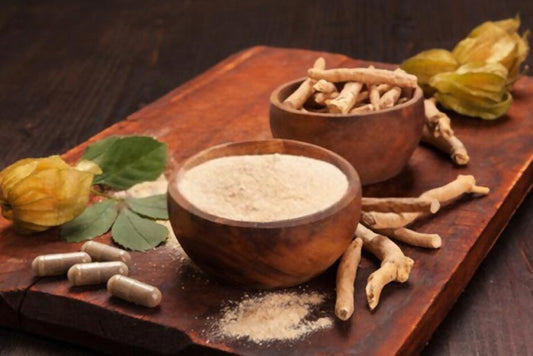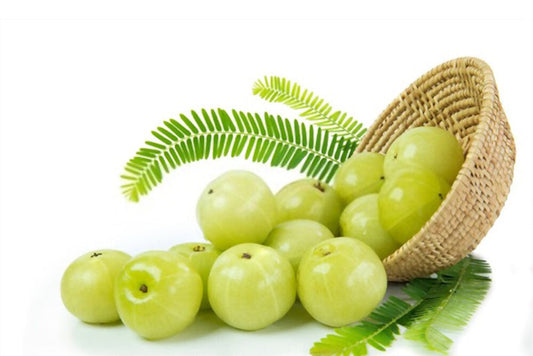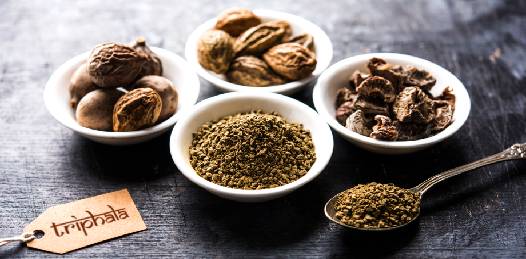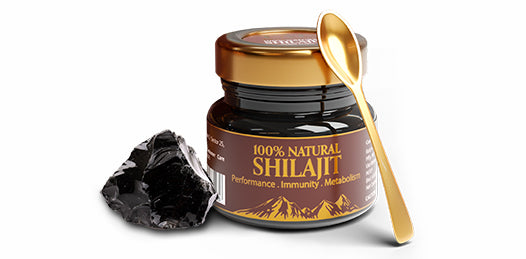
If you compare yourselves to your sibling or spouse, you might find some remarkable differences, how one likes a cold room while the other cannot tolerate it. While one can digest heavy non-vegetarian food or kidney beans, the other can only digest soups. While one has a high appetite, the other is barely hungry. While one sweats a lot, the other does not perspire much. You might have as well thought, "Why such differences?" Despite being born in the same family and having a similar diet, siblings tend to be different in physical, mental and emotional characteristics.
Also, you will be amazed to know that Ayurvedic treatment is highly personalised. Yes, you heard it right. Only rarely, two individuals with the same health problems would get the same prescription from their Ayurvedic doctor.
But how does this work? Let me give you an example. Imagine four members in your family of the same age got fever. The General Practitioner would provide the same Paracetamol of the exact dosage to all four of you. But if you happen to visit an Ayurvedic doctor, you will notice that your doctor might have to give different prescriptions to each of you. One might get a decoction (kadha), might prescribe another tablet (Vati). Though the symptoms, age and body weight are similar, different types of medicines are given. And you will observe the fever gone without causing any other side effects.
You may have a question. Why not give the same medicine to all? It is much easier and saves time, right? But, Ayurveda believes in balancing the doshas of each individual to maintain health.
What is Ayurveda Dosha and Prakriti?
To understand the Ayurvedic doshas, one has to understand the 'Panchamahabhuta Concept' in Ayurveda.
Panchamahabhutas are the five elements present in the universe.
सर्वम द्रव्य्मं पांचभौतिकम अस्मिन्नर्थे।
All substances in the universe are composed of the five elements. Of course, in varying amounts.
The five elements are Akash (Space), Vayu (Air), Agni (Fire), Jala (Water), Prithvi (Earth).
The Akash and Vayu combine to form the Vata Dosha. Agni and Jala Mahabhuta combine to form the Pitta Dosha, and Jala and Prithvi form the Kapha Dosha. This is how tridoshas came into existence.

Prakriti is basically of 7 types:
Single Dosha Prakriti : Also known as "Heena Prakriti" or Poor/weak body constitution.
- Vata Prakriti
- Pitta Prakriti
- Kapha Prakriti
- Vata Pitta Prakriti
- Kapha Pitta Prakriti
- Kapha Vata Prakriti
- Tridoshaja Prakriti
How to identify your dosha?
Prakriti decides your physical, mental and emotional characteristics. You will be able to determine your own Prakriti from the characters mentioned in the table below. This vata pitta kapha test easily helps you to identity your Ayurvedic dosha. However, it is best to get your Ayurvedic bodytype confirmed by an Ayurvedic doctor.
| Characteristic Feature | Vata Prakriti | Pitta Prakriti | Kapha Prakriti |
| Physical Characteritics | |||
| Body build / Frame | Slim | Medium | Heavy |
| Hair | Thin, rough, brittle, knotted | Straight, oily, smooth | Thick, curly. |
| Nails | Dry, rough , brittle , break easily | Sharp, flexible , lustrous , pink | Thick , smooth, polished look |
| Teeth | Irregular, protruding teeth, receding gums | Medium sized teeth, reddish gums, yellowish tinge on teeth | Big, white strong teeth and gums |
| Joints | Small , cracky joints | Average , stable joints | Big and heavier joints |
| Skin | Dry, early wrinkles, cool, dark complexion, tans easily, pigmented spots on skin | Smooth, fair skin, oily T zone, freckles, moles, redness rashes and acne , sunburns easily | Soft, glowing and youthful, oily, cold skin , white , pale skin, tans evenly |
| Body weight | Low, difficulty in putting on weight | Medium- can lose and gain weight easily | Overweight - difficult to lose weight |
| Shape of face | Long, angular with bony prominences, thin | Heart shaped, pointed chin | Large, round, full |
| Lips | Thin, dry , chapped | Soft, medium sized | Large, full, soft lips |
| Digestion and metabolism | Irregular , forms gas | Quick , causing burning | slow/dull/prolonged , forms mucus |
| Appetite | Irregular, low appetite | Strong, unbearable | Slow but steady |
| Thirst | High but irregular | High and regular | Low |
| Elimination | Hard/constipated | Loose/bulky stools | Oily, sluggish. |
| Sleep | Reduced, not continuous | Needs regular hours , sound sleep | Deep, heavy , prolonged sleep |
| Speech | Speaks fast and unclear | Clear, to the point, precise | Long chats, slow , gentle |
| Physical activity | Hyperactive | Moderate | Slow |
| Mental activity | |||
| Emotions | Uncertainty, Anxious, Fearful | Ambitious, practical, Anger | Peaceful, calm, like solitude |
| Memory | Quick to remember and to forget | Average, clear, distinct | Slow to remember and does not forget things easily |
| Faith | Variable | Extremist | Consistent |
| Irritability / anger | Short tempered/ highly irritable but easily forgiving | Quick and sustained. | Always cool. |
| Sexual Drive | Fantasizes, romantic, quick to release. | Strong burning desire, intense and active | Slow, enduring, tender, passionate |
| Lifestyle orientation | |||
| Way of thinking | Creative, wants to do many projects at the same time but hardly completes any. | Organised , very much focussed. Only one project at a time. Needs time and space for oneself. | Slow but steady to reach a goal, follows a plan, dislikes change. |
| Job preferences | They are good artists, models, creative jobs, writers, globe trotters, designers | Teachers, doctors, politicians, challenging job | Sedentary , routine job, seeks stability |
| Response to problems | Worried, confused, impulsive , Changes decisions again and again | Organised , only one thing at a time | Slow and steady. Dislikes change. |
| Concentration | Cannot concentrate for a long time. Erratic thoughts and fast in execution | Moderate | Good but slow thinking and execution |
| Dreams | Dreams like flying/ travelling. Being in movement. Dreams of the sky and moving clouds. Adventurous dreams | Dreams of skilful planning and execution, dreams of fire and hot objects |
Dreams of snow, water bodies, rain, fantasy type of dreams that are pleasant |
Role of doshas in maintaining health

Acharya Charaka, in his book, Charaka Samhita, explains health as a state of equilibrium of three doshas (Vata, Pitta and Kapha), seven dhatus (seven tissues - Rasa, Rakta, Mamsa, Medhas, Asthi, Majja, Shukra), Agni (digestive fire), three malas (waste products - urine, faeces and sweat).
Thus, it is clear that imbalance of doshas leads to disease, and the balance of doshas is good health.
Ayurvedic Diet and lifestyle recommendations for Vata Prakriti
Vata is very light and cold being a combination of air and space. It is responsible for all bodily movements. Vata imbalance can lead to gas, bloating, aches and pains in the body. The following are the diet and Ayurvedic lifestyle recommendations to follow for Vata Prakriti after taking the dosha test.
| Category | For regular use | Occasional use | Use rarely or Avoid |
| Grains | Wheat, Rice, Oats | Corn | Buckwheat, Millets, Horse gram, Barley |
| Pulses | Whole Green Mung beans, Split Mung dal, Yellow Mung, Toor dal, Masoor dal |
Chick pea (Chole), Urad dal | Kidney Beans (Rajma), Cow Peas (Lobiya) and Soya |
| vegetables | Bottle gourd, Snake gourd, Ivy gourd(kundru), Okhra (bhindi), Cabbage, Cauliflower, Broccoli, Sweet potatoes, Carrot, Thori, Beet root, Ash gourd, Pumpkin |
Potatoes, Mushrooms, Bitter gourd, Spinach, Methi leaves, Sour tomato, Turnips, Raddish, Cucumber, Brinjal. Use onion and garlic in moderation. |
Peanuts, Mustard greens, Raw Bananas, Capsicum |
| Fruits | Sweet varieties of Apples, Grapes, Bananas, Pears, Papaya, Jamuns, Water melon, Musk melon, Sweet mangoes, Pomegranate, Sweet plums, Figs, Coconut, Amla, Avocados |
Oranges, Sweet lime, Jackfruit, Lemon, Pineapple, Raw mangoes |
|
| Beverages | Almond milk, Masala chai, Ginger tea | Milk tea, Green tea, Coffee | Black Coffee |
| Dry fruits & nuts | Soaked Almonds, Cashews, Raisins, Dates, Prunes, Sunflower seeds, Walnuts (Always consume soaked seeds and nuts) |
Pumpkin seeds, Flax seeds, Lotus seeds, Dry figs, Pistachio | |
| Non veg | Egg whites, Mutton or Bone soup broth | Chicken, Freshwater Fish | Pork, Beef, Duck, Shell fishes and other seafood |
| Dairy | Milk, Butter, Ghee, Buttermilk, Curd | Cheese | Milkshakes, Ice Creams |
| Spices | Cumin, Turmeric, Coriander, Basil, Fenugreek, Fresh Ginger, Asafoetida, Poppy seeds, Oregano, Thyme |
Cloves, Dry ginger, Garlic, Cardamom, Cinnamon, Black Pepper, Mustard seeds | Cayenne peppers, Chilies |
| Oils | Sesame oil, Coconut oil, Ground nut oil | Olive oil, Sunflower oil, Rice bran oil, Mustard Oil |
|
| Alcohol | Beer, Red wine | Whiskey, Rum, | |
| Others | Mishri | Jaggery, honey, pickles | white refined sugar, Refined flour |
Lifestyle to be followed:
- You must protect yourself during the cold weather. Wear a lot of layers and keep yourself warm throughout the season. Do not expose yourself to the cold/dry wind.
- Walking is a very good physical activity to balance the Vata. You can go for a walk in the morning for half an hour every day.
- Stay grounded. Make sure you take out at least five to ten minutes for meditation every day. It will help the mind relax.
- You must take care of your dry skin. Hence, you should massage your body with a good ayurvedic oil or sesame oil before taking your bath to nourish the muscles and improve circulation. Anointing the head and body with oil is the best method to control vata.
- Vigorous exercises aggravatesvatato a great extent. Perform only mild exercises according to your strength.
- Prefer tastes like Sweet, sour andsalty andtake less of spicy, bitter and astringent tastes.
- Yoga - Pawanamuktasan, Anulom Vilom Pranayam, Bhramri Pranayam
Ayurvedic Diet and lifestyle recommendations for Pitta Prakriti
Pitta is a combination of two elements, namely, fire and water elements. Pitta is light, fluid and hot. Pitta imbalance can lead to digestive disturbances like acidity, burning sensation, bleeding disorders etc. Red this table to find out how to balance Pitta after taking the dosha test.
| Category | For regular/ Daily Use | Occasional use | Rarely use/ avoid |
| Grains | Whole wheat, rice Barley, Quinoa. | Corn, Oats, Millets | Buckwheat |
| Pulses | Whole Green mung, Split Mung Dal, Yellow Mung, Red lentils (Masoor Dal), Toor dal | Soya, Kidney Bean (Rajma), Cow Peas (Lobiya), Chick Peas (channa/ chole), Dew beans (Moth ki dal) | Urad dal |
| vegetables | Bottle gourd, Snake gourd, Ivy gourd(kundru), Bitter gourd, Okhra (bhindi), Broccoli, Carrot, Cluster beans, Thori, Beans, Turnips, Radish, Methi leaves, cucumber, beetroot, Spinach, Ash gourd, Pumpkin. | Mushrooms, Use less of Onion, garlic and sour tomato, Capsicum, Amaranth leaves, Raw bananas, Cauliflower, Potatoes, Sweet potatoes, Yam | Brinjal (Baingan), Mustard greens |
| Fruits | Apples, Berries, Pears, Papaya, Jamuns, Pomegranate, Amla, Watermelon | Musk melon, Banana, Custard apple, Mangoes, Chikoo, Litchi, Jackfruit | Oranges, lemon, grapes, pineapple, plums |
| Beverages | Coriander and mint tea, Dry ginger tea, Tulsi tea, Masala chai, Coconut milk , Tender coconut water. | Coffee, Green tea, Milk tea, Coffee | Black tea, Lemon Tea and Black coffee |
| Dry fruits & nuts | Almonds, Sunflower seeds, Walnuts, Pumpkin seeds, Makhana, Dates, Raisins | Flax seeds, Prunes, Figs, Pop corn | Pistachio, Cashews,Peanuts |
| Non veg | Chicken - steamed / tandoor, Egg whites. | Seafood, Freshwater fish, Mutton. | Pork, Beef, Duck, Egg yolk. |
| Dairy | Milk, Buttermilk, Ghee | Paneer, Butter, Curd | Milkshakes, ice creams, cheese, sour cream |
| Spices | Cumin, Coriander, Fennel, Dry ginger, Turmeric, Cinnamon, Oregano | Mustard seeds, Nutmeg, Mint, Basil, Fresh ginger, Asafoetida, Poppy seeds, Cloves, Cardamom, Black pepper, Garlic and Onion | Cayenne peppers, chilies |
| Oils | Olive oil, Coconut oil, Sunflower oil, Use only 3 tbsp oil per day |
Groundnut oil, Sesame oil, Mustard oil | |
| Alcohol | Beer | All hard liquor and red wine | |
| Others | Sugar candy, Brown sugar, Organic fruit preserves | Jaggery, Honey, Pickles, Fried papad |
Lifestyle to be followed:.
- Eat fresh and warm food.
- Add ½ to 1 tsp ghee to your meal.
- Prefer soups and boiled salads over raw salads.
- Snack on fruits or boiled sprouts.
- Lunch should be the heaviest meal of the day with a light breakfast and dinner.
- Stay grounded. Make sure you take out ten to thirty minutes for meditation every day. It will help the mind relax.
- Avoid drinking Tea or Coffee on an empty stomach and spicy diet.
- Prefer tastes like Sweet, bitter and astringent tastes and less of spicy, salty and sour tastes.
- Yoga – Chandra namaskar, Sheetali pranayam, Sitkari pranayam, Mandukasan.
Ayurvedic Diet and lifestyle recommendations for Kapha Prakriti
Kapha is heavy and cold. It is a combination of water and earth elements. Kapha is also moist, oily, dull and smooth. The following are the Ayurvedic diet and Ayurvedic lifestyle recommendations for Kapha Prakriti after taking the dosha test.
| Category | For regular use | Occasional use | Rarely use |
| Grains | Wheat, Brown rice, Barley, Quinoa, Millets, Daliya | Corn, Bats, buckwheat, Basmati rice | White Sticky rice |
| Pulses | Whole Green Mung beans, Split mung dal, Yellow mung, Peas | Chick pea (white & black Channa), Cow peas (Lobia), Urad dal, Pigeon pea(Toor dal), Masoor dal, Soya | Black eyed peas, Kidney Beans |
| vegetables | Bottle gourd, Snake gourd, Ivy gourd(kundru), Palak, Methi leaves, Amaranth leaves, Mustard greens, Cabbage, Cauliflower, Broccoli, Carrot, Thori, Ash gourd, Pumpkin, Bitter gourd | Onion, Garlic, Mushrooms, Sour Tomato, Turnips, Radish, Cucumber, Eggplant(baingan), Sweet Potatoes, Beet root, Capsicum, Raw Bananas, Okhra (Bhindi) | Potatoes, Yam, Tapioca. |
| Fruits | Apples, Jamun, Grapes, Pears, Papaya, Pine apple, Pomegranate, Plums, Amla, Coconut, Water melon | Oranges, Lemon, Musk melon | Jackfruit, Mangoes, Bananas |
| Beverages | Goat milk, Almond milk, Ginger tea, Tulsi tea, Masala chai, Black Tea, Black Coffee, Green Tea | Cow milk, Almond milk, Coconut milk. | Milk tea |
| Dry fruits & nuts | Almonds, Sunflower seeds, Walnuts, Pumpkin seeds | Flax seeds, Dates, Prunes, Figs | Pistachio, Cashews, Peanuts |
| Non veg | Bone soup broth, Chicken – Steamed/ Tandoor | Egg whites, Freshwater fish, Mutton, Turkey, Shelled fishes. | Pork, Beef, Duck, Egg yolk. |
| Dairy | Skimmed Milk, Buttermilk | Ghee, Paneer | Milkshakes, Ice Creams, Curd, Cheese,Sour Cream, Butter, |
| Spices | Cumin, Coriander, Basil. Fenugreek, Turmeric, Fresh ginger, Dry ginger, Asafoetida, Oregano, Thyme, Cloves, Garlic, Cardamom, Black pepper, Cinnamon. | Mustard seeds, Nutmeg, Poppy Seeds | Cayenne peppers, chilies |
| Oils | Soya bean oil, olive oil, Sesame oil. | Coconut, Mustard oil, Ground nut oil | |
| Alcohol | Whiskey, Brandy, Rum,Wine | ||
| Others | Honey, Jaggery, Pickles | Sugar candy, Brown sugar, Organic fruit preserves, Roasted Papad | Refined oil, flour and sugar. Oily and fried food. |
Lifestyle to be followed:
- Take warm and fresh food.
- Liquid soup diet can be preferred over raw salads.
- Lunch should be the heaviest meal of the day with a light breakfast and dinner. Eat only when you are hungry.
- Hot/ warm water to be taken one hour prior to after a meal and throughout the day.
- Prefer tastes like Spicy, bitter and astringent and take less of Swwet, sour and salty tastes.
- Avoid cold food and drinks.
- Make exercise a part of your routine. Adopt an active lifestyle.
- Yoga – Practice Surya Namaskar, Sarvangasan, Kapal bhati pranayam regularly.
Take the Ayurvedic Skin and Hair dosha quiz to determine your Ayurvedic dosha and know the herbs and products that suit your skin and hair types.











